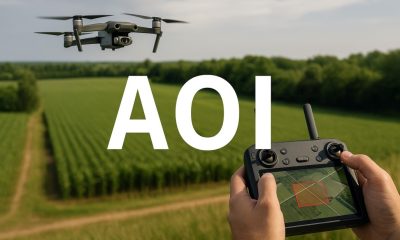France Drone Regulations
Drone Operating Rules in France
Published
8 months agoon
Table Of Contents

Drone Operating Rules in France- What Are They?
France has established a comprehensive set of Drone Operating Rules through its aviation authority, the Direction Générale de l’Aviation Civile (DGAC), to ensure the safety of people, property, and other airspace users. These regulations, applicable to both recreational and commercial operators, cover essential aspects such as altitude limits, proximity to individuals, and restricted airspace zones. Adhering to these guidelines is crucial for maintaining legal compliance and promoting responsible drone use in France.
Maximum Altitude
150-Meter Height Restriction
- Altitude Limit: The maximum allowed altitude for drone flights in France is 150 meters (approximately 492 feet) above ground level. Operators must remain within this limit to avoid conflicts with manned aircraft. Special authorization from the DGAC is required for flights above this altitude.
Distance from People and Property
Safe Distance Guidelines
- Minimum Distance: Drones must maintain a minimum distance of 30 meters from uninvolved people and private property. This rule ensures that drones do not pose a safety risk to individuals or disrupt the privacy of private spaces.
- Prohibited Overflight of People: Flying directly over people or large gatherings is strictly prohibited unless the operator has specific permission from the DGAC. This rule helps prevent injuries or accidents in the event of equipment failure.
Restricted Airspace
No-Fly Zones and Controlled Airspace
- Prohibited Areas: Drones are not permitted to fly in restricted areas such as near airports, military installations, or national monuments without prior authorization. This includes tourist areas like the Eiffel Tower, where flights are generally restricted to protect public safety and avoid airspace conflicts.
- Use of Géoportail: The Géoportail platform provides real-time information on restricted zones across France. Operators are encouraged to consult this resource before each flight to avoid inadvertently entering prohibited areas.
Visual Line of Sight (VLOS)
VLOS Requirement
- Direct Sight: Operators must keep their drone within visual line of sight at all times, meaning the drone should be visible without the use of binoculars or other visual aids. This rule is critical for maintaining control over the drone and avoiding potential collisions with other objects or aircraft.
Night Operations
Rules for Night Flying
- Permissions Required: Night flights are considered higher-risk and require special permission from the DGAC. Operators must submit an application detailing their flight plan, including measures for ensuring visibility and safety during low-light conditions.
- Lighting Requirements: Drones flown at night must be equipped with anti-collision lights visible from a distance of at least 150 meters. This helps both the operator and other airspace users maintain awareness of the drone’s location.
Geofencing Technology
Preventing Unauthorized Access
- Built-In Safety: Many modern drones come equipped with geofencing technology that automatically restricts them from entering no-fly zones. Operators are advised to ensure their drones have updated geofencing software to prevent accidental violations of restricted airspace.
Summary
In summary, understanding and adhering to the Drone Operating Rules in France is vital for both recreational and commercial operators. By following these regulations, pilots can ensure safe, legal, and responsible drone operations, protecting both people and the integrity of French airspace.
To Learn more about acronyms used in this article visit our Drones Acronym Page.











